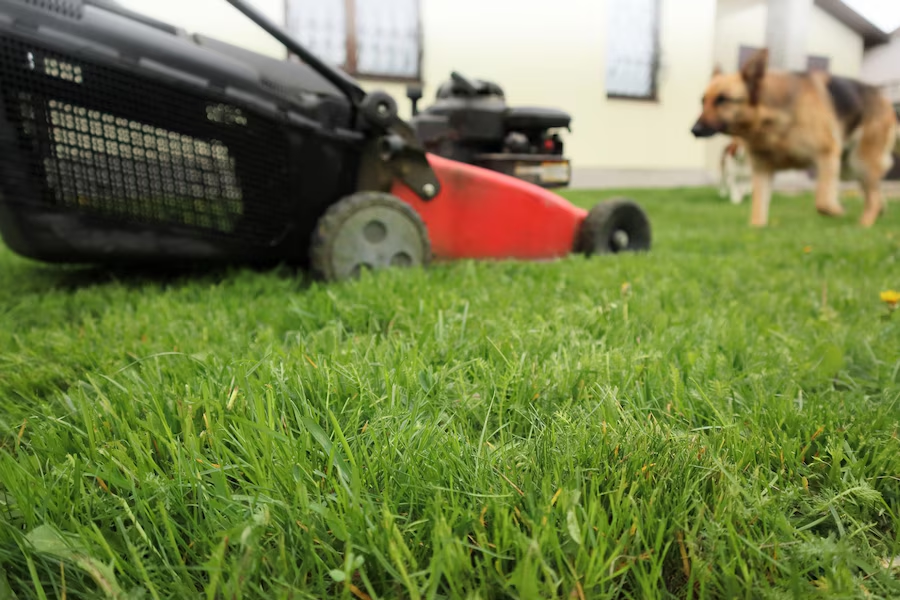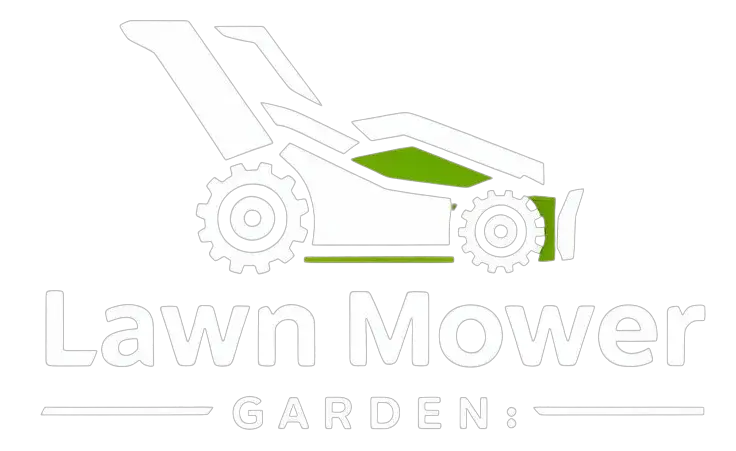
Lawn care is an essential part of maintaining a beautiful yard, and one of the most important tasks is ensuring that your grass is cut properly. However, it’s not just about having a sharp mower blade or the perfect mowing schedule. The way you handle your grass clippings can significantly affect the appearance of your lawn, the health of your grass, and even the environment.
If you’re tired of seeing piles of grass clippings scattered across your yard, or worse, dealing with the hassle of cleaning up after mowing, a good grass catcher might just be the solution. With various types of grass catchers available, choosing the right one can be overwhelming. In this post, we’ll compare different types of lawn mower grass catchers, offering insights into their pros and cons, and helping you decide which is the best fit for your lawn care needs.
1. What is a Lawn Mower Grass Catcher?
Before we dive into the comparisons, let’s take a moment to define what a lawn mower grass catcher is. Simply put, a grass catcher is an attachment that collects grass clippings as you mow. It prevents clippings from scattering on the lawn, keeping your yard clean and tidy. Grass catchers come in different forms and sizes, and they’re available for various types of lawn mowers, including push mowers, riding mowers, and zero-turn mowers.
2. Why Should You Use a Grass Catcher?
You may be wondering, “Why bother with a grass catcher?” Here are some reasons why it’s worth considering:
- Clean Lawn: Grass clippings left on the lawn can create unsightly piles. A catcher collects them neatly, giving your lawn a cleaner, more professional look.
- Healthier Grass: Grass clippings act as a natural fertilizer when left on the lawn, returning nutrients to the soil. A grass catcher allows you to collect and compost the clippings, which can help improve the health of your garden or lawn.
- Less Cleanup: Without a grass catcher, you’ll have to rake or blow the clippings away, which can be time-consuming. A catcher eliminates this step, saving you valuable time.
- Better Control: If you’re mowing in a high-traffic area, like a public park or near your driveway, grass clippings can quickly spread and create a mess. A grass catcher contains the clippings, giving you more control over where they go.
3. Types of Lawn Mower Grass Catchers
Now, let’s break down the different types of grass catchers available. Each type has its own set of benefits and potential drawbacks. Depending on your lawn size, mower type, and personal preferences, one of these might be the perfect solution for you.
3.1. Fabric Grass Catchers
Fabric grass catchers are one of the most common types. Made of durable mesh or fabric material, these catchers are designed to attach to the back of your mower. They are typically lightweight and easy to use.
Pros:
- Lightweight: They don’t add much extra weight to your mower, making them easier to maneuver.
- Breathable: The fabric material allows air to circulate, which can help reduce the buildup of moisture and mold.
- Affordable: Fabric catchers are usually among the most budget-friendly options on the market.
- Easy to Empty: Many fabric catchers have a simple design that allows you to remove and empty them with ease.
Cons:
- Smaller Capacity: Depending on the design, fabric catchers may not hold as many clippings as other types.
- Less Durable: Over time, the fabric may wear out, especially if exposed to harsh conditions or sharp objects.
- May Clog: In some cases, the mesh material can get clogged with wet grass, making it harder to collect clippings efficiently.
Best For: Small to medium-sized lawns where you need an easy, budget-friendly solution for regular mowing.
3.2. Plastic Grass Catchers
Plastic grass catchers are a step up from fabric models in terms of durability. Made from tough, molded plastic, these catchers are designed to handle larger volumes of clippings.
Pros:
- Durability: Plastic catchers are more resistant to tearing or wear than fabric ones.
- Larger Capacity: They typically offer more storage for grass clippings, which means fewer trips to the compost pile or trash bin.
- Better Collection Efficiency: Plastic catchers are less likely to clog compared to fabric models, and they’re more efficient at holding clippings.
Cons:
- Heavier: Plastic catchers tend to be heavier than fabric catchers, which could make your mower feel a bit bulkier.
- Cost: Plastic catchers usually come at a higher price point than fabric ones.
- Less Flexibility: The rigid plastic design doesn’t collapse for easy storage, making them more challenging to store when not in use.
Best For: Larger lawns where you need more capacity for grass clippings and a durable catcher.
3.3. Steel Grass Catchers
Steel grass catchers are the heaviest-duty option available. Made from galvanized steel or other heavy metals, these catchers are designed for tough, commercial-grade use.
Pros:
- Superb Durability: Steel catchers are built to last and can handle a significant amount of wear and tear.
- Large Capacity: Many steel catchers are designed to handle large volumes of grass, making them perfect for extensive lawns or frequent mowing.
- Efficient Clipping Collection: Steel catchers tend to have a more robust structure that reduces the chance of clippings spilling out.
Cons:
- Heavy and Bulky: Steel catchers are the heaviest option, which can make your mower harder to maneuver.
- Higher Cost: The price tag for steel catchers tends to be much higher than other types.
- Rusting: If not properly maintained, steel catchers can rust, especially when exposed to wet grass over time.
Best For: Commercial-grade mowers or extremely large lawns where capacity and durability are a top priority.
3.4. Grass Bag Systems
Grass bag systems are typically used with riding mowers and zero-turn mowers. These systems are usually mounted at the rear of the mower, and the clippings are funneled into a large bag as you mow.
Pros:
- Large Capacity: These systems usually have large bags that can handle several mower loads of clippings.
- Convenient Emptying: Many grass bag systems have a quick-release mechanism, allowing for easy dumping of the collected clippings.
- Minimizes Spillage: The large bags are designed to hold the clippings securely, minimizing spillage while mowing.
Cons:
- Cumbersome: Grass bag systems can be bulky and add weight to your mower, making it more challenging to navigate tight spaces.
- Requires More Effort: You may need to stop more frequently to empty the bags, especially on larger lawns.
- Expensive: Grass bag systems for riding or zero-turn mowers are generally pricier than other types of grass catchers.
Best For: Larger properties with riding mowers or zero-turn mowers that need large-capacity solutions.
3.5. Mulching Kits
While not technically a grass catcher, mulching kits are an alternative to traditional grass collection. A mulching kit allows the mower to chop the grass clippings into tiny pieces, which are then deposited back into the lawn. This technique is often referred to as “grasscycling.”
Pros:
- No Clippings to Collect: Mulching eliminates the need to collect or dispose of clippings altogether.
- Fertilizes the Lawn: The finely chopped grass clippings act as natural fertilizer, returning nutrients to the soil.
- Environmentally Friendly: Reduces waste and helps promote healthy lawn growth.
Cons:
- Not Ideal for Long Grass: If your grass is too long, mulching may leave behind clumps that can suffocate the lawn.
- Not for All Lawns: Lawns that are prone to thatch buildup or with poor soil may not benefit from mulching as much as others.
Best For: Lawns that are regularly mowed and where clippings can be recycled back into the soil.
4. Choosing the Right Grass Catcher for Your Lawn
Now that we’ve covered the different types of grass catchers, how do you decide which one is best for your lawn?
Here are some factors to consider:
- Lawn Size: For smaller lawns, a fabric or plastic catcher should be sufficient. Larger lawns may benefit from a more durable and larger-capacity system, such as a grass bag or steel catcher.
- Mower Type: The type of mower you have will also influence your choice. Riding mowers and zero-turn mowers typically require bagging systems, while push mowers may do well with a simpler fabric or plastic catcher.
- Budget: If you’re on a tight budget, a fabric catcher is an affordable option, whereas steel catchers and grass bag systems come at a higher price point.
- Storage Space: Consider how much space you have for storing the catcher when not in use. Fabric and plastic catchers tend to be easier to store than bulky steel or bag systems.
- Environmental Impact: If you’re environmentally conscious, a mulching kit or composting your grass clippings may be the best choice.
5. Conclusion: Finding the Perfect Grass Catcher
In the end, choosing the right grass catcher depends on your specific needs. Whether you’re looking for a budget-friendly solution for a small lawn or a high-capacity catcher for a commercial-grade mower, there’s an option for every type of lawn care enthusiast. By considering factors like lawn size, mower type, and budget, you’ll be able to select the best grass catcher to make your mowing experience more efficient and enjoyable.
Happy mowing, and may your lawn always be lush and perfectly manicured!



